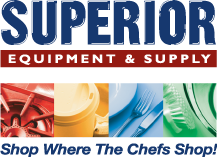
With diners becoming more and more aware and educated about the origin of their food, restaurant operators need to be in the know. But what is the difference between organic and natural? What does “locally sourced” mean anyway? Below is a quick summary of the most common labels you may encounter and what they mean.
Food Label – USDA Organic: Foods with an “organic” label must consist of at least 95% organic produced ingredients. The remaining 5% of the ingredients must be on the approved National List compiled by the USDA. For produce, this means they were grown with natural fertilizers and for meat it means the livestock was only fed organic feed and no hormones or antibiotics were used.
Foods with the 100% organic label must be made using only organic ingredients and fertilizers. This food is subject to the same regulations that are in place for foods labeled “organic”. Shopping organic can be pricey. HelpGuide.org has a useful article on what produce you can skip going organic on and which is worth the investment.
Any items with a “made with organic ingredients” label must consist of at least 70% organic ingredients and sewage-sludge based production aids or ionizing radiation cannot be used. Products that fall under this category are not eligible to use the USDA seal or the word “organic” in marketing materials.
Using a Natural Food Label Natural/All Natural: The “natural” or “all natural” food label is permitted for use when the item does not contain artificial ingredients or preservatives. Ingredients may be processed, but only minimally. Naturally labeled food may contain antibiotics, growth hormones or other chemicals.
Using a Free-Range Food Label Free Range/Cage Free: Products can only be labeled “free range” or “cage free” if the animals are not contained in any way and are allowed to roam freely over an area of land. This label can be somewhat deceiving as it is minimally regulated by the USDA and certifications are not currently required.
Using a Grassfed Food Label: The “grass fed” label is only reliable when it contains the USDA shield. For the most part, foods labeled “grass fed” are typically made from animals that are raised primarily on ranges than feed lots (grain fed). Animals that have been grain fed are more likely to have less nutritional value than grass fed animals. The USDA does not regulate this label in anyway so there is no minimum of grass-based feed required to be labeled “grass fed”.
Using a Locally Sourced Food Label: There is no one definition for “locally sourced”. This label could be used for foods that are from your community, state, region or even country. Speak with your supplier about where they are sourcing their food.
Sustainable: While this label doesn’t extend to food, the packaging of food is becoming more environmentally sustainable. You can further decrease your restaurant’s carbon footprint by using sustainably packaged ingredients. Don’t forget you can also use eco-friendly to-go containers and dinnerware.
Superior provides restaurants with a full range of tabletop collections, buffet essentials and quality kitchen products. With over 35 years of industry experience, our consultative style of service is profit-driven, sourcing the very best products to meet the unique needs of every business. We partner with each customer to offer cost-effective solutions and to support their prosperity and success. Discover how our experts bring excellence and ingenuity to the table every day.
